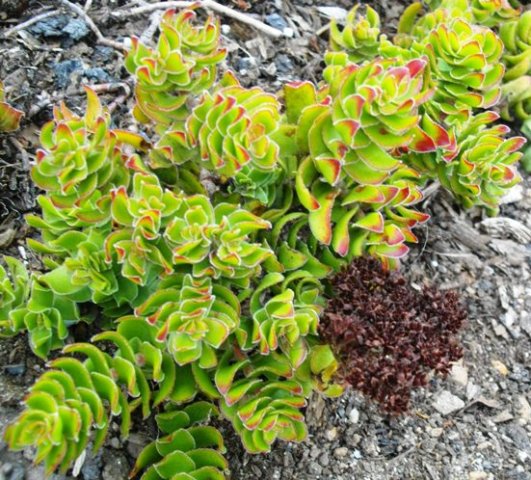Crassula dejecta

Crassula dejecta, the doily crassula and previously scientifically C. undulata among other names, is a densely branched, leafy succulent shrublet that reaches about 40 cm in height.
The fleshy and rounded leaves are positioned opposite in neat rows up the stems. They are sessile, having no petioles. The leaves sometimes have a slight red touch towards the edges, especially when growing in full sun. The leaf margins also appear silvery due to fringes of tiny hairs growing along them.
The small flowers appear during summer in dense, flat-topped to rounded clusters. The petals are white or slightly pinkish, but the sepals, ovary and anthers are red. Small capsules develop in autumn containing many tiny seeds.
The species distribution is in the south of the Northern Cape in Namaqualand and to the Western Cape as far southeast as the Riviersonderend Mountains.
The habitat is dry fynbos and succulent Karoo hillsides, rocky outcrops, crevices and ledges, usually south-facing. The species is not considered threatened in habitat early in the twenty first century.
This plant is common in gardens, serving well as ground covers or container items in full sun (Smith, et al, 2017; www.plantzafrica.com; http://redlist.sanbi.org).

